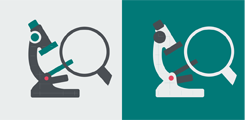Endometrial Polyps
Endometrial polyps are hyperplastic proliferations or proliferations of exaggerated growth of the endometrial glands and tissue surrounding a blood vessel. They form projections which protrude into the surface of the endometrium, the internal phase of the uterine cavity responsible for housing the embryo during pregnancy and for menstrual cycles.
Due to the advance in the use of transvaginal ultrasound scans and of the diagnostic hysteroscopy, the diagnosis of this condition is increasing. Polyps are the most commonly found condition during the performance of the diagnostic hysteroscopy and they are the reason for the majority of surgical hysteroscopy procedures.
Causes
Alteration in the balance of oestrogen/progesterone levels: hormones regulating proliferation and menstrual release of the endometrium, higher levels of receptors of these hormones are detected in the interior of the polyps than in the surrounding normal endometrium. Both contribute to this irregular growth of the endometrial glands and their vascularisation resulting in polyps.
Symptoms
The majority of polyps are asymptomatic and are usually diagnosed during a routine gynaecological examination. If at any point they become symptomatic, in general they produce symptoms in relation to abnormal uterine bleeding, with this being the most common symptom and it presents in 64 to 88 per cent of women with polyps. Breakthrough bleeding is the most common symptom in pre-menopausal women with endometrial polyps. The volume of bleeding tends to be small, and it may only be spotting.
On rare occasions, an endometrial polyp is visible at the time of the speculum examination in the external cervical os. Prolapsed polyps may be symptomatic or asymptomatic. Bleeding after sex is also common, and the finding is common in asymptomatic patients who consult for infertility.
Postmenopausal bleeding is another common presentation; some postmenopausal women with polyps have breakthrough bleeding during hormone therapy.
RISK FACTORS
The frequency of onset increases in high blood pressure, diabetes, obesity and from the age of 40, with the prevalence being greater between the age of 45 and 50 and certain medications, such as tamoxifen, fundamental to prevent recurrences in patients diagnosed with some types of breast cancer.
CLASSIFICATION
Polyps can be divided into:
- Functional or Typical (20%): with a similar appearance to the normal endometrium
- Hyperplastic (35%): with changes that indicate an accelerated growth.
- Atrophic (40%): with changes with a trend to delayed growth or growth in regression, are polyps that are usually found in menopausal patients.
- Malignant (1-5%): with cancer cells in the polyp.
The concept of pseudopolyps refers to thickened endometrial areas with the appearance of polyps, less than 1 cm and which disappear after menstruation since they do not have their own vessels.
With regard to the risk of malignancy approximately 95 per cent of endometrial polyps are benign. A systematic review of 17 observational studies which included more than 10,000 women reported that the incidence of malignant or hyperplastic polyps was significantly greater in postmenopausal women compared to premenopausal women (5.4 versus 1.7 per cent) and in those with bleeding compared to those without bleeding (4.2 versus 2.2 per cent).
Diagnosis
An ultrasound scan can diagnose the existence of an endometrial polyp either by the direct visualisation of it and its vascularisation using colour Doppler ultrasound or indirectly when an area of abnormal endometrial growth is detected.
Other techniques that can help in the diagnosis are the hysterosalpingography, also known as an x-ray of the tubes, and the sonohysterography, or ultrasound scan with fluid infusion, within the uterus.
The gold standard test for the diagnosis of polyps is the hysteroscopy, as it makes it possible to confirm and to locate the injury, assess the endometrium in detail, establish an anatomopathological diagnosis with biopsies taken of the polyp and of the endometrium, presenting a sensitivity and specificity between 95-100%. Thanks to this test, diseases such as endometrial hyperplasia or the different types of endometrial carcinoma can be diagnosed concomitantly at an early stage.
Techniques that preceded the hysteroscopy, such as the performance of a uterine curettage, left more than 10% of polyps undiagnosed.
There is firm evidence that in postmenopausal women with bleeding and a thickened endometrium and a negative blind endometrial biopsy (without hysteroscopic vision), demonstrated that 3 per cent of women had undiagnosed endometrial cancer and 3 per cent had endometrial hyperplasia with atypia in polyps.
Treatment
In general, the removal of any polyp which is symptomatic, i.e. which causes bleeding or infertility, is indicated. In premenopausal patients with totally asymptomatic polyps, with a functional aspect and less than 10 mm, it may be appropriate to have simply a wait-and-see approach, with ultrasound controls every 6 months to assess their growth.
The hysteroscopic polypectomy is a simple technique, which is usually performed on an outpatient basis or in a day hospital. The patient may present with a little vaginal bleeding for a few days after the procedure, as well as mild discomfort that usually subsides with anti-inflammatory drugs (NSAIDs). The majority of patients resume their everyday life in a few days.








